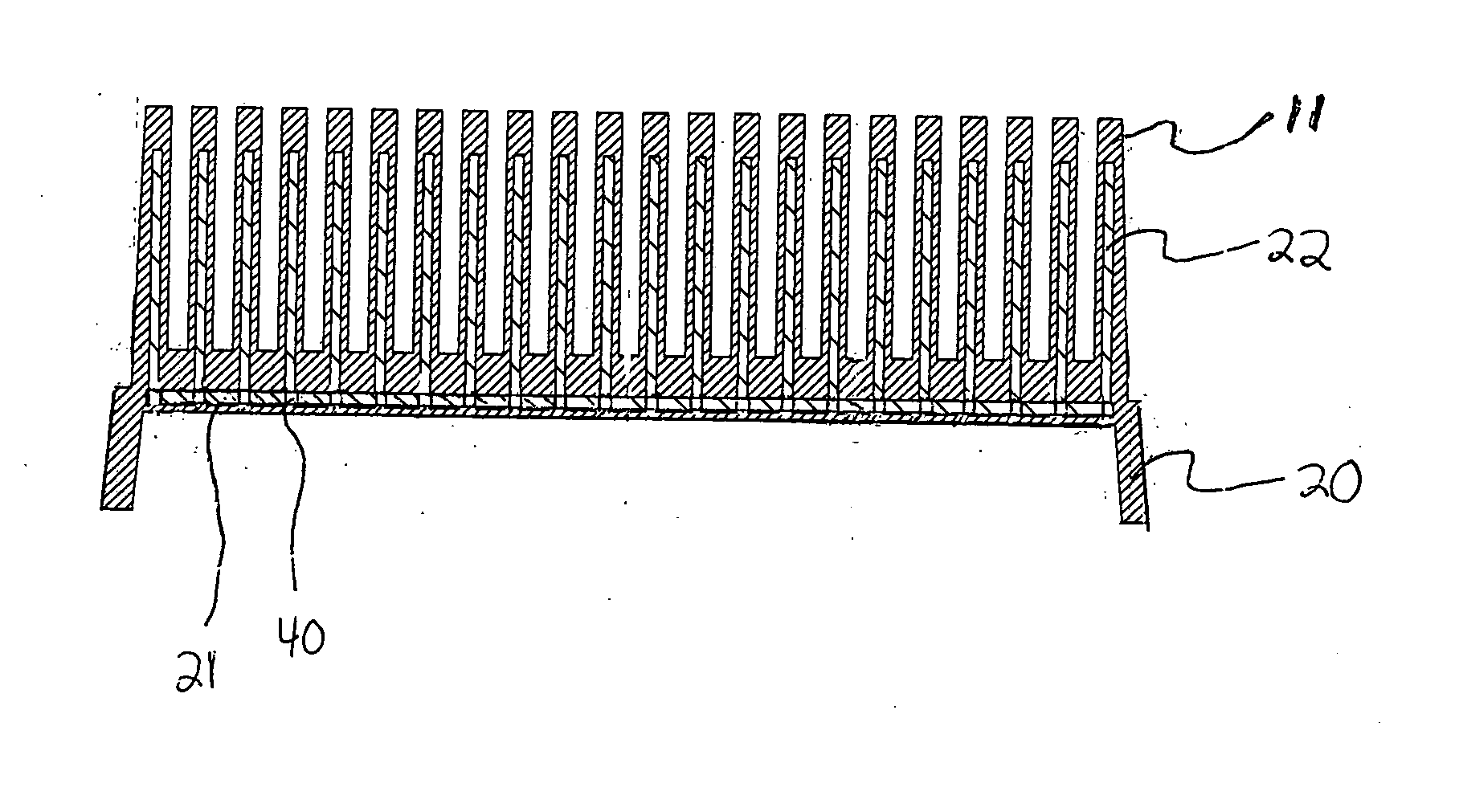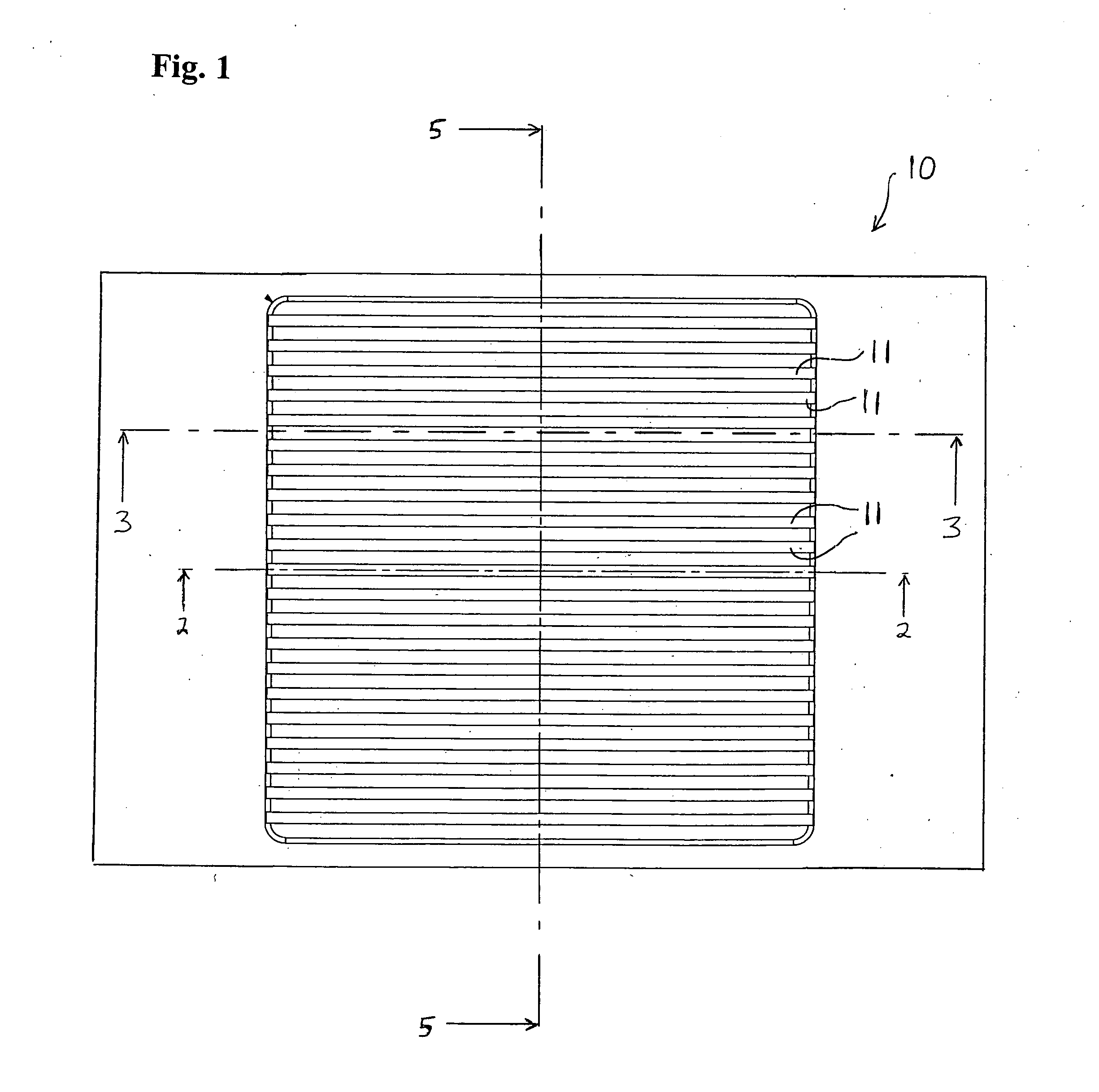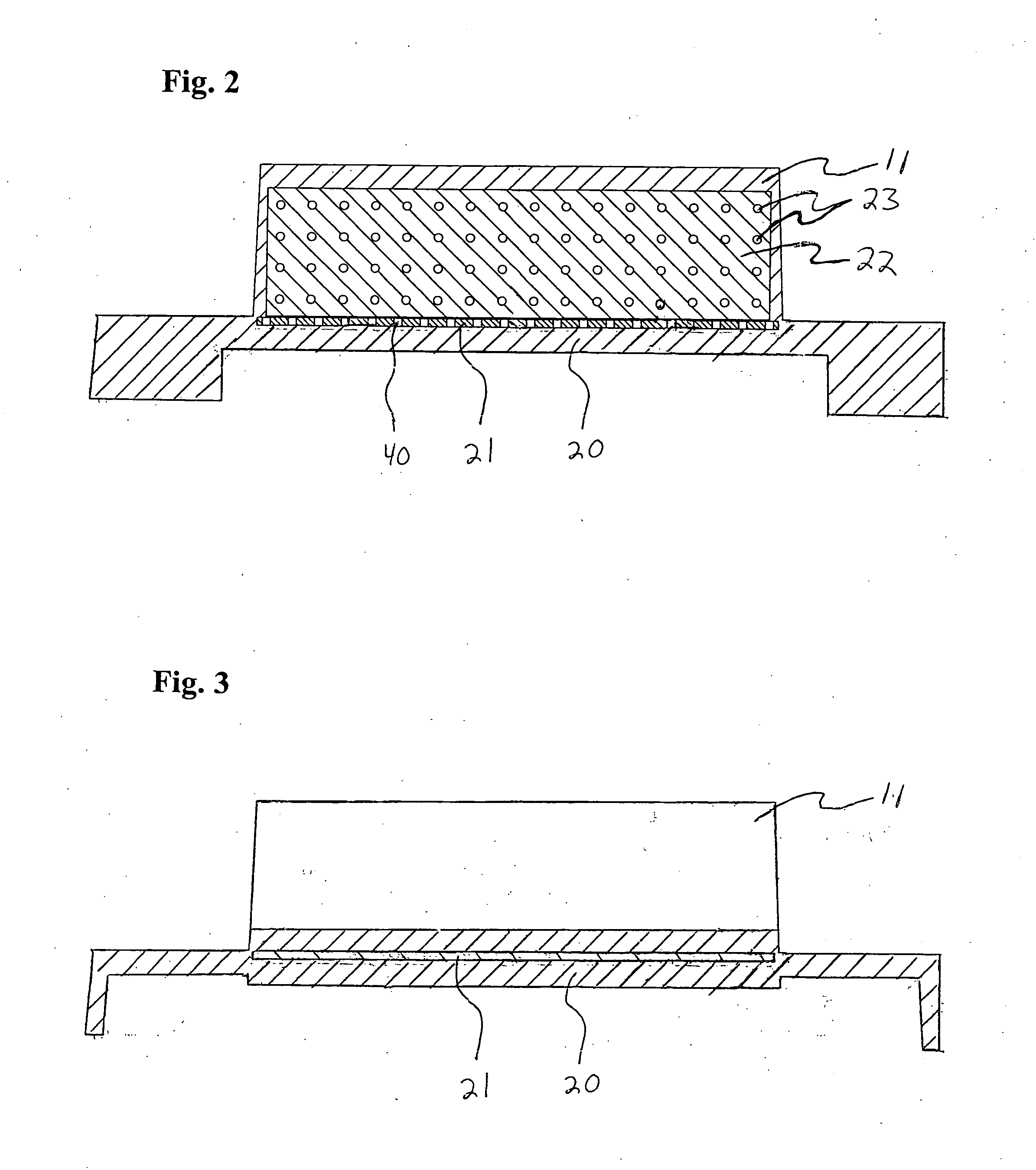Method and apparatus for dissipating heat
a technology of apparatus and heat dissipation device, which is applied in the direction of cooling/ventilation/heating modification, semiconductor/solid-state device details, semiconductor devices, etc., can solve the problem of increasing heat generation of components, and achieve the effect of limited heat load and difficult fabrication
- Summary
- Abstract
- Description
- Claims
- Application Information
AI Technical Summary
Benefits of technology
Problems solved by technology
Method used
Image
Examples
Embodiment Construction
[0033] As noted above, in accordance with the present invention, there is provided a heat dissipation device comprising a base, a base element, protrusions and protrusion elements.
[0034] The base can comprise any suitable material. Preferably, the base comprises a material which readily transfers heat. In one aspect, the base can comprise a metal matrix composite, i.e., a material made by infusing (e.g., by melting and injecting) a metal into a porous pre-form. For example, a representative example of a preferred base is a base which comprises AlSiC, preferably in the form of a metal matrix composite. In a preferred aspect of the present invention, the base consists of and / or consists essentially of AlSiC, preferably in the form of a metal matrix composite.
[0035] As noted above, the base element is positioned within the base.
[0036] The base element can be formed from any suitable material, preferably a material which has an extremely high heat transfer coefficient. For example, a...
PUM
 Login to View More
Login to View More Abstract
Description
Claims
Application Information
 Login to View More
Login to View More - R&D
- Intellectual Property
- Life Sciences
- Materials
- Tech Scout
- Unparalleled Data Quality
- Higher Quality Content
- 60% Fewer Hallucinations
Browse by: Latest US Patents, China's latest patents, Technical Efficacy Thesaurus, Application Domain, Technology Topic, Popular Technical Reports.
© 2025 PatSnap. All rights reserved.Legal|Privacy policy|Modern Slavery Act Transparency Statement|Sitemap|About US| Contact US: help@patsnap.com



